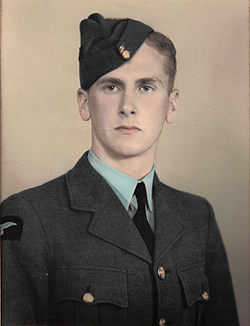
_______________________
James Douglas ROSS
Service Number: NZ404290
RNZAF Trade: Flight Mechanic, then Flight Engineer
Date of Enlistment: 8th of November 1940
Date of Demob: 16th of January 1946
Rank Achieved: Flight Sergeant
Flying Hours: 1,100hrs aircrew productive flying
Operational Sorties:
Time In RNZAF: Five years and 69 days
Time Within New Zealand: Three Years and 196 days
Time Overseas: One year and 218 daysDate of Birth: 1st of March 1921, in Cambridge
Personal and Service Details: Jim Ross was the son of Mr James William Ross and Mrs Annie Dorothy Secombe Ross of 19 Victoria Road, Cambridge. He was educated at Hamilton Technical College, where he studied for two and a half years in the subjects of Mechanics, Physics and Workshop Practice, as well as mathematics, science, English and other general subjects. At the same time he took night school classes in Motor Theory.These studies set him up perfectly for a mechanical career, and when he left school while in the Fifth Form he pursued a career in servicing tractors. He got a job with Tractor Traders Ltd., which was then situated in Ward Street, Hamilton, where he found himself servicing and operating machinery from small cars up to 15 ton bulldozers.
Service Details: At the age of 19 years old Jim decided to volunteer for service in the Royal New Zealand Air Force. His AF.32 Application For Enlistment form was received on the 10th of July 1940, and after the initial recruitment period, he joined the Air Force on the 8th of November 1940, at RNZAF Station Harewood, in Christchurch. He completed his Initial Training Wing training on that station, and was posted up to Rongotai, in Wellington, on the 12th of December 1940.
Once there, he began his trade training at the Technical Training School, which was housed in the old Centennial Buildings at Rongotai. This school introduced Jim and other prospective Flight Mechanics to many and varied aircraft types and engines.
Following the course in Wellington, the newly-trained Jim was posted back to RNZAF Station Harewood again on the 1st of April 1941. On this day he became a founding member of No. 3 (General Reconnaissance) Squadron, which formed on that day with Blackburn Baffins. The squadron operated Blackburn Baffins till July, then Vickers Vincents replaced them for a short time, and by August 1941 the squadron was fully equipped with the new twin engined Lockheed Hudson bombers, and served by protecting the shores and shipping lanes and shores of the Canterbury region.
On the 8th of March 1942 the squadron moved north to RNZAF Station Whenuapai, and Jim went with it. They were preparing to become the first RNZAF operational unit to deploy to the forward area in the Pacific.
Whilst at Whenuapai tragedy struck the station. An American B17 Flying Fortress bomber was making a visit to the station. Its engines were running rough, but the crew turned down assistance from the RNZAF mechanics who offered to help - one of them being Jim. In the dead of night it had taken off from Whenuapai but failed to get airborne and crashed just off the end of the runway. This is a well documented tragedy, but one that Jim always told his family later was probably preventable. According to his widow Shirley, Jim and other RNZAF mechanics had realised that something was amiss with at least one of the B17's engines, but when they offered to rectify the problem they were shunned by the American crew because they felt security was more important than safety. They did not want the RNZAF personnel near the bomber, and told them so in no uncertain terms. That crew were to all lose their lives.
The bomber had crashed off the end of the runway after failing to gain any altitude, and the aircraft then exploded with such a force a house that was not so nearby actually moved on its piles. The explosion was apparently heard across most of Auckland and many people thought it was the beginning of the Japanese invasion!
Amazingly, the next day Jim was able to salvage a piece of the wreckage from the crashed bomber, something he should never have been able to do as the site was highly secure. He swiped a piece of the propeller hub and then set about fitting a clock into it. Also from the crashed bomber he secured a piece if one of the props, and he used a cross-section of this to mount the clock on as a base. He gave the clock to his mother, and it is now in the possession of his widow Shirley, who is very proud of this unique souvenir with a grim past.
Eventually of course the time came for No. 3 Squadron to move north into the Pacific, to Henderson Field at Guadalcanal. The squadron groundcrew who were not accompanying the Hudson bombers embarked from Auckland on the 22nd of September 1942.
This would be the first of three tours Jim would complete in the Pacific. The first as groundcrew, a Fitter IIE, with No. 3 (GR) Squadron, at Guadalcanal as mentioned. The latter two as aircrew.
When he switched to aircrew, the ground staff must have really lost a talent. His family recalls that he was considered one of the top engineers on Guadalcanal, and as well as his work for the RNZAF squadron, he was also in great demand from American units who wanted to tap into his expertise with engines. Apparently he had the knack of listening to almost any aircraft engine and instantly pinpoint what the problem was with it, saving others the time of stripping it down and searching for the problem. This meant that aircraft would be flown into Henderson Field day and night to seek a consultation with Jim Ross, according to his family.
Upon returning to New Zealand after this eight month tour, he spent four months at RNZAF Station Hamilton with No. 1 Repair Depot, no doubt on the production line of engines being serviced there. His skills that made him so popular in Guadalcanal were undoubtedly much utilised at No. 1R.D. too. Jim must have enjoyed this posting as it was so close to home, but he was soon on the move north again, back to Whenuapai.
He joined No. 14 Servicing Unit at Whenuapai, but this posting too was for just four months long, and he was soon off to Ohakea for another training course, because he'd decided to remuster to the trade of Flight Engineer. This was an aircrew trade, and Flight Engineers were responsible for ensuring that the engines and other systems of large aircraft ran correctly while in flight, and that fuel transfers, etc. were done correctly. They also had to be capable airgunners because part of their job was the protection of the aircraft in the event of it being attacked. So at Ohakea he attended the Gunnery Training School, where he'd have spent much time in the turret of a Hudson firing at towed targets, as well as a lot of classroom work learning the theory of his new occupation.
On passing that course Jim was ready to go to a Catalina squadron and learn the ropes of an operational Flight Engineer. The Catalinas were doing valuable work from behind the front lines in the Pacific in rescuing downed pilots, acting as transport aircraft, doing anti-submarine and shipping patrols, and also keeping in touch with the inhabitants of many remote islands. Whilst on a patrol the Cats usually cruised at an altitude of no more than 1000 feet, even in the event of a tropical storm, and they would fly in triangular grids searching the ocean for shipping or perhaps a downed pilot or distressed Allied ships. These patrols lasted for up to 14 hours, and seldom less than 10 hours duration over a big empty ocean.
Jim served for two tours on the Catalinas of No. 6 (FB) Squadron, RNZAF, while they were based at Lauthala Bay in Fiji, and later at Halavo Bay, Florida Island, off Guadalcanal.
However by the war's end he had changed squadrons and was working on the C47 and Hudson transport aircraft of No. 41 (Transport) Squadron.
Jim was finally demobbed from RNZAF service in January 1946. He was up for promotion to Warrant Officer at the time, but as his demob came through first, he remained with the rank of Flight Sergeant.
When Jim had first joined the RNZAF he'd met Norman Todd, who had joined the RNZAF the same day. These two would become great mates. They both trained to become flight mechanics and though not together the whole war, their paths continued to cross. They certainly both went to Guadalcanal together with No. 3 (GR) Squadron on their first tour. Later when Jim remustered to become aircrew in Catalina flying boats, Norm did the same thing.
At the end of the war Jim suggested that he and Norm should go into business together. Using a £100 war gratuity grant they established Ross Todd Motors Ltd. in the old Leamington Dairy Company premises in Cambridge. This thrived, and by 1954 the business moved into Kirkwood Street in the centre of Cambridge (where the Briscoes building is now situated). Later in the 1980's the business moved again down the hill into Albert Street in Carter's Flat. The business remains there today and is one of the best known Cambridge motor traders. They specialise in tractors and heavy machinery.
At the time of Jim's death he had become a very successful businessman, and was managing director of Baker Construction Ltd, a director of Earthmovers (Waikato) Ltd, a director of Jack Tidd - Ross Todd Ltd, and a director of Cambridge Transport, as well as being a partner in Ross Todd Motors. Jim had helped to establish and build up the successful Baker Construction Ltd with another ex-RNZAF Cambridge airman, Arthur Baker.
Following the war Jim had married Shirley and had four sons, Michael, Tony, Timothy and Simon. Jim's passion was motor racing and he would have been proud that his grandson Nick Ross is now a top New Zealand driver.
Date of Death: Jim died on the 11th of August 1981, aged 60, following a car accident on the road between Maniatoto and Alexandra in Central Otago, whilst down there on a business trip. He was a passenger in the car,
Buried at: Jim Ross was buried in the Leamington CemeteryConnection with Cambridge: Jim was born in Cambridge and lived here for virtually his whole life except for his RNZAF service.
More Service Details: The following details come from Jim's service records, kindly supplied by his widow Shirley Ross.
29th of March 1941 On leave at completion of Course 23rd of March 1942
14th of June 1942 To No. 3 (GR) Squadron
22nd of September 1942
15th of May 1944 Flight Engineer on No. 6 (FB) Sqn 16th of November 1944 3rd Tour begins 30th of April 1945 41 Sqn RNZAF 41 Sqn16th of January 1946 Demobbed and put onto Reserve Rank
Note: The Cambridge RNZAF Ross Connection
There were at least three men in the RNZAF from Cambridge with the surname of Ross. Jim Ross was one of them. He was no relation to Ian Ross, but he and Ian were very good friends and Ian boarded with Jim and his family. The third man was Tom Ross, who was Ian's cousin.
________________________________________________________________
Jim Ross's Photo Collection
If a photo does not load first time, refresh your browser or 'right click' on the photo and hit 'Show Picture'
 |
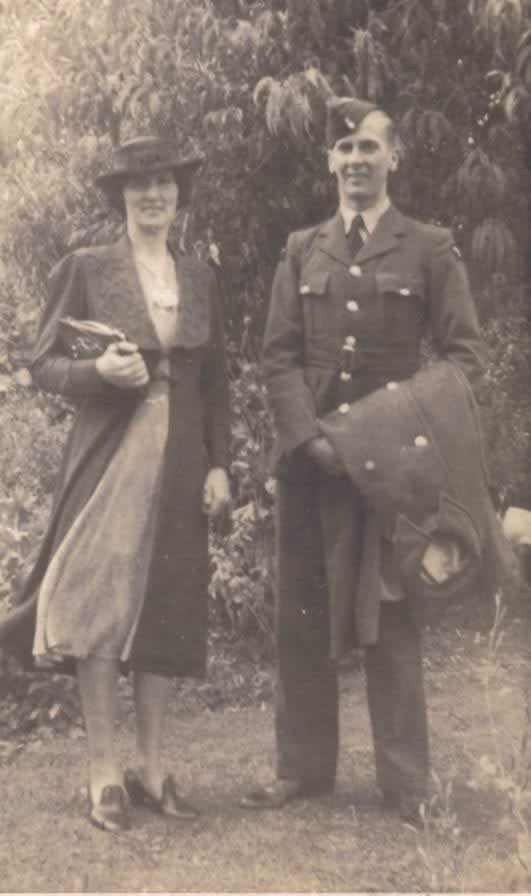 |
|---|---|
| Above: Jim and his beloved car, possibly at Harewood | Above: Jim and his mother Annie Ross |
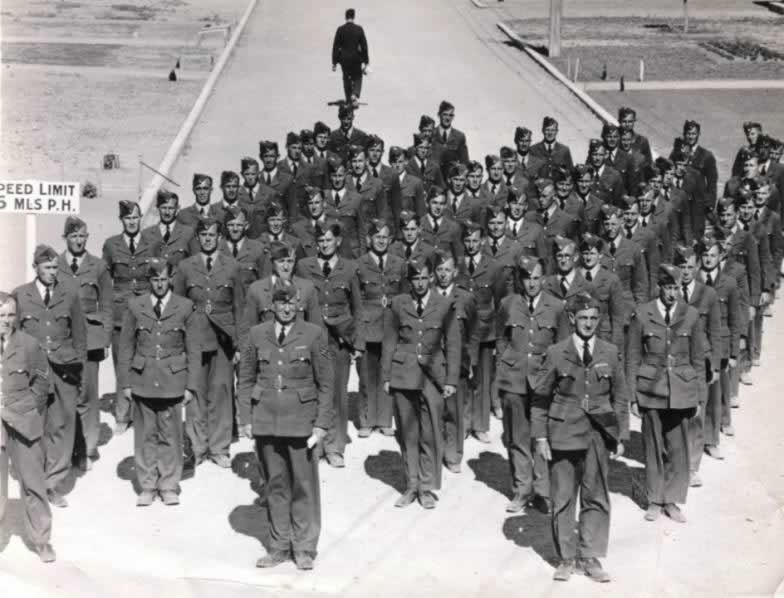 |
|
| I believe this is probably Jim's Initial Training Wing course at RNZAF Station Harewood | |
 |
|
|
|
 |
|
| Taken on the same occasion, this was probably Jim's class members. He is third from left in the third row | |
 |
|
| Airmen gathered in front of the sound shell at RNZAF Rongotai, previously part of the Centennial Buildings | |
 |
|
| Jim's trade course training on Instructional Airframe Blackburn Baffins, at Rongotai | |
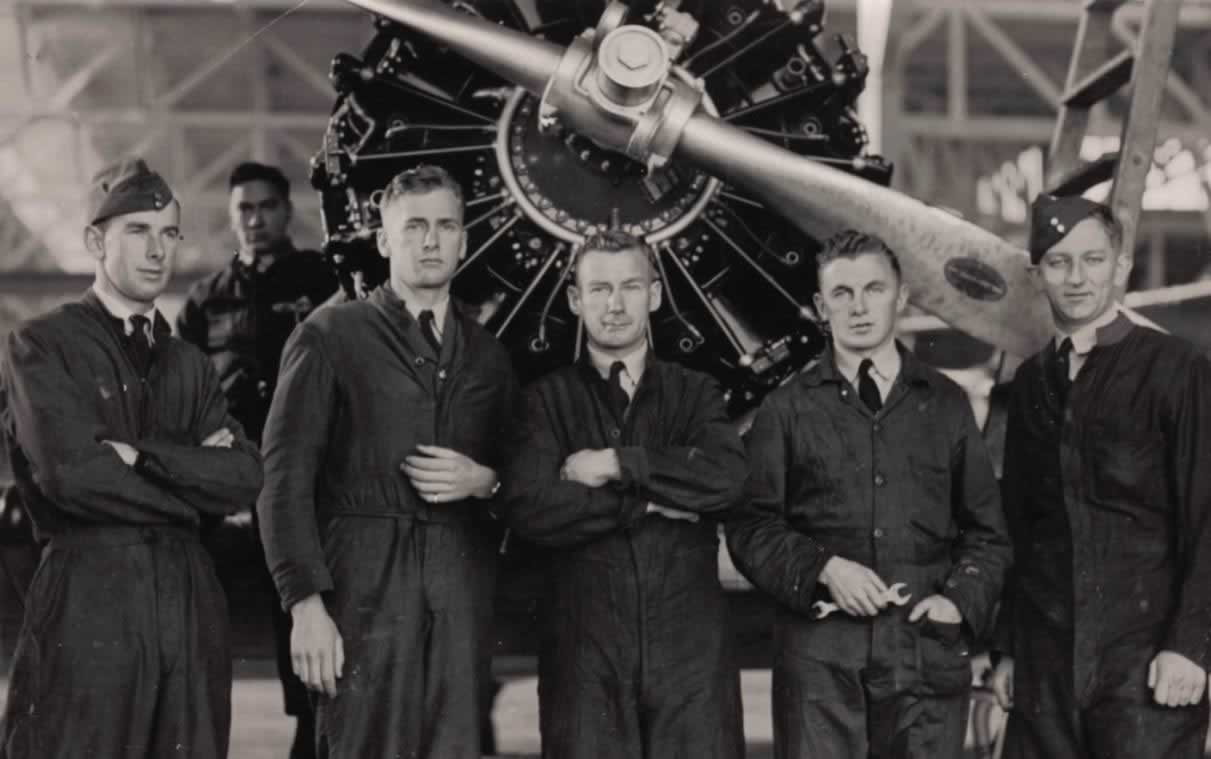 |
|
| Jim, 2nd from left, with what looks like instructors and fellow course members at Rongotai, learning the intricacies of the new modern Harvard engine | |
 |
|
| A street parade. Jim is in the front of the flight, on the left of picture. Also in this flight is Norm Todd, C. Manly Walsh and Victor Pitman - all Cambridge airmen | |
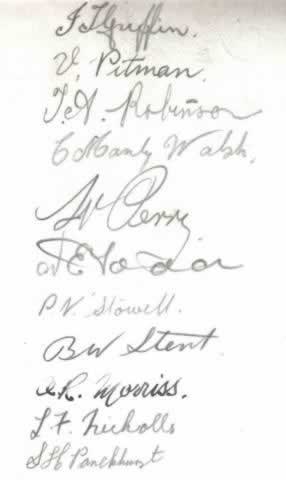 |
|
| Signatures on the rear of the photo above | |
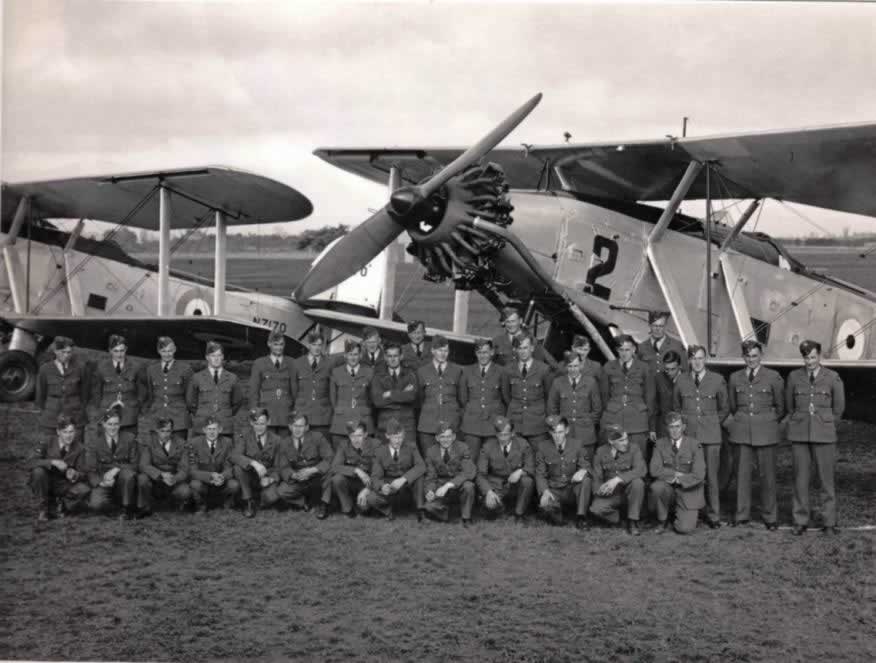 |
|
| Above: No. 3 (GR) Squadron at RNZAF Station Harewood in mid 1941 . This is probably just the ground servicing staff. Jim Ross and his mate Norm Todd are both in this photo | |
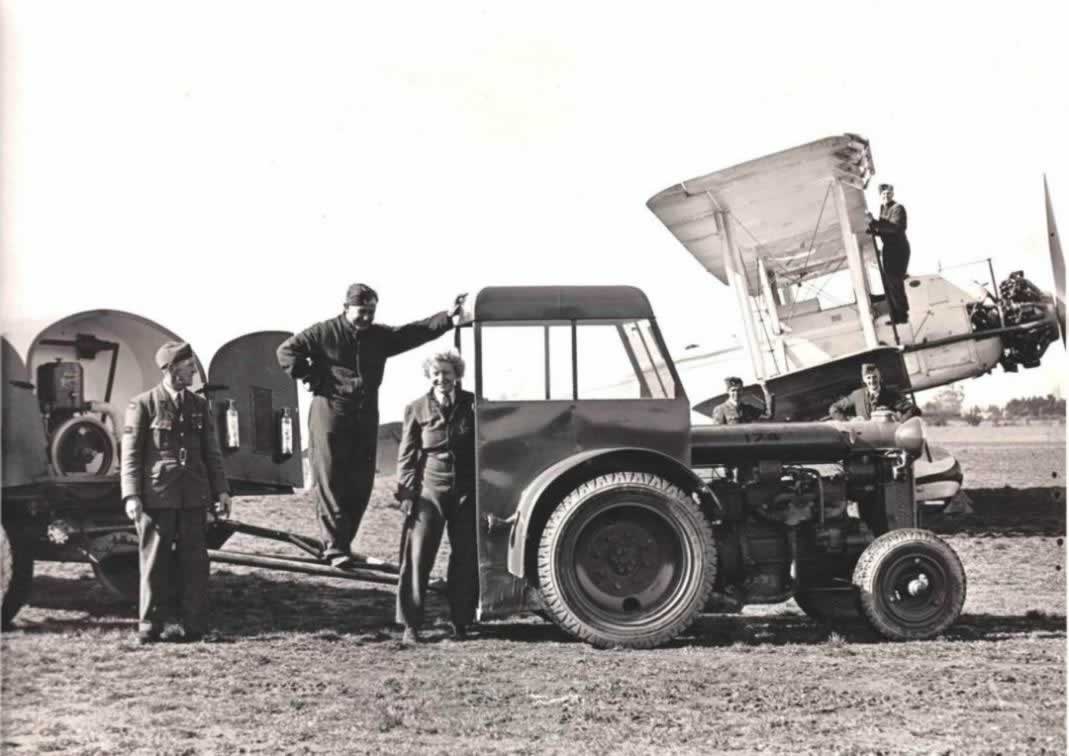 |
|
| This wonderfully evocative shot shows airmen and a WAAF driver filling the fuel tanks on a Vickers Vincent of No. 3 (GR) Squadron. Jim Ross is up on the fuselage holding the wing | |
 |
|
| Jim, 3rd from left, in his Tropical or summer uniform | |
 |
|
| Jim on a Charter Parade in Christchurch. He is marching at the front right behind the officer | |
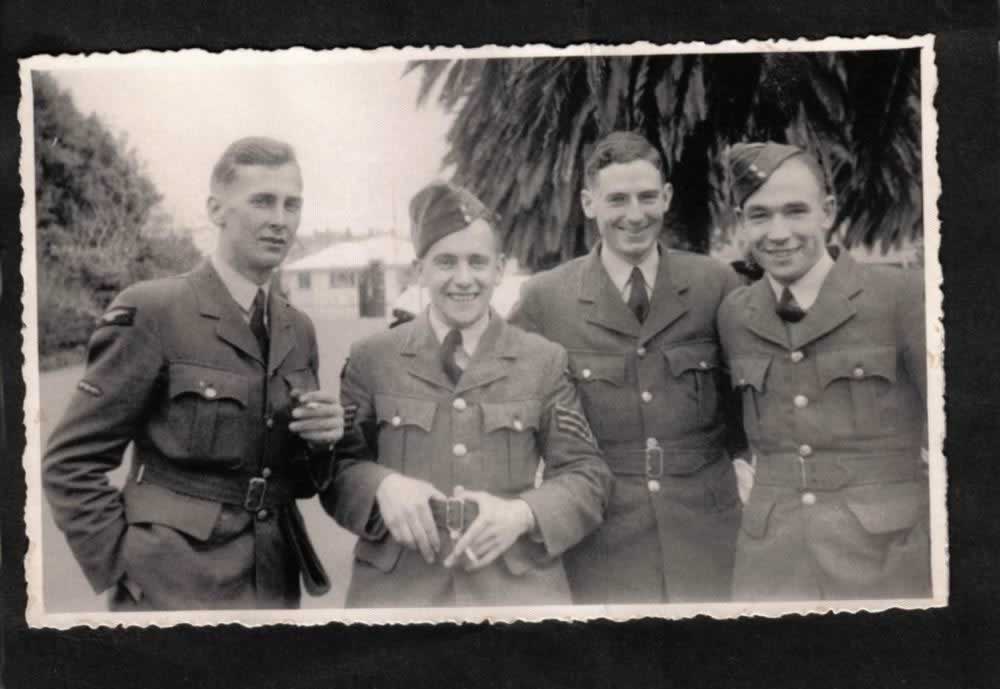 |
|
| Above: Jim Ross, unknown, Norm Todd and unknown at the Ellerslie Races in Auckland, 1942 | |
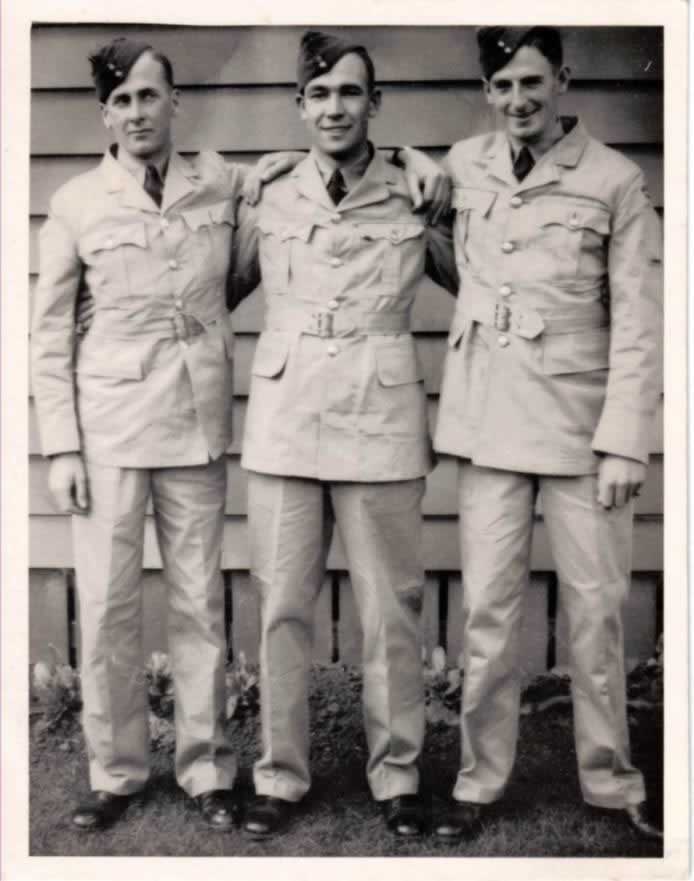
|
|
|
|
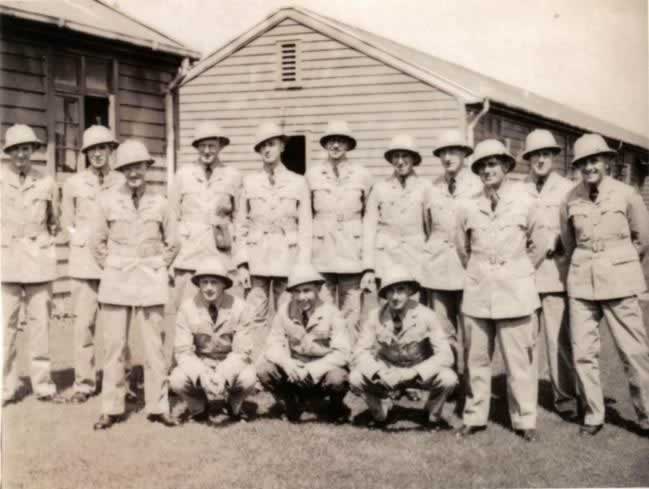 |
|
| Members on No. 3 (GR) Squadron sport their newly kitted out Tropical uniforms at Whenuapai, before they moved up to the forward area at Guadalcanal | |
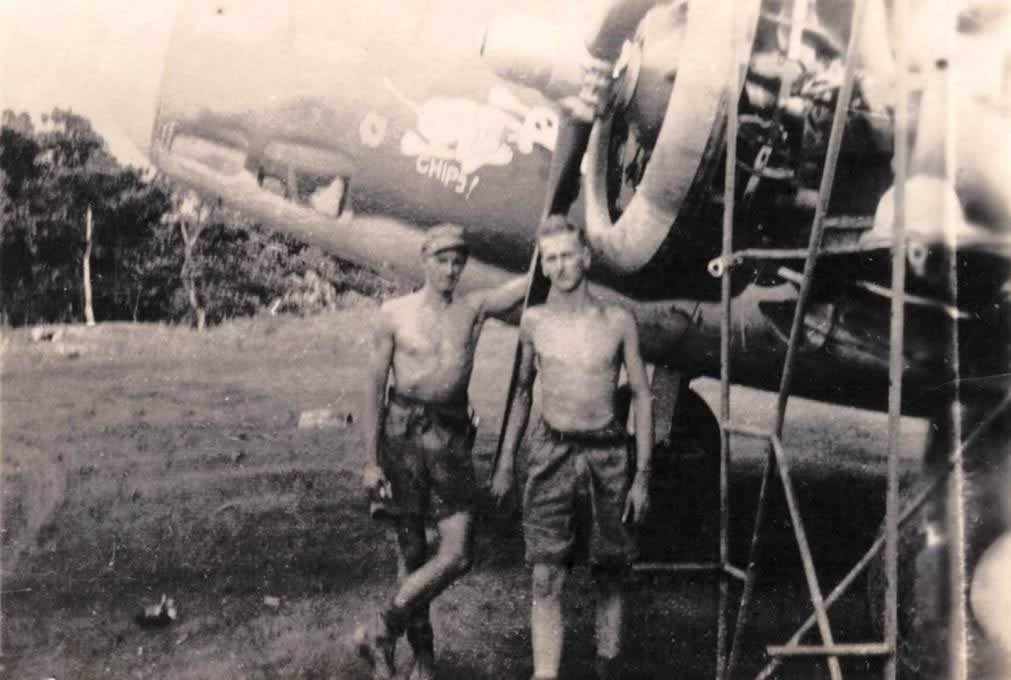 |
|
| Jim and another mechanic working on the port engine of a No. 3 (GR) Squadron Hudson at Henderson Field, Guadalcanal, which has been nicknamed 'Chips' and has the noseart of what looks like Pluto or some similar dog. Does anyone know the identity of this Hudson? | |
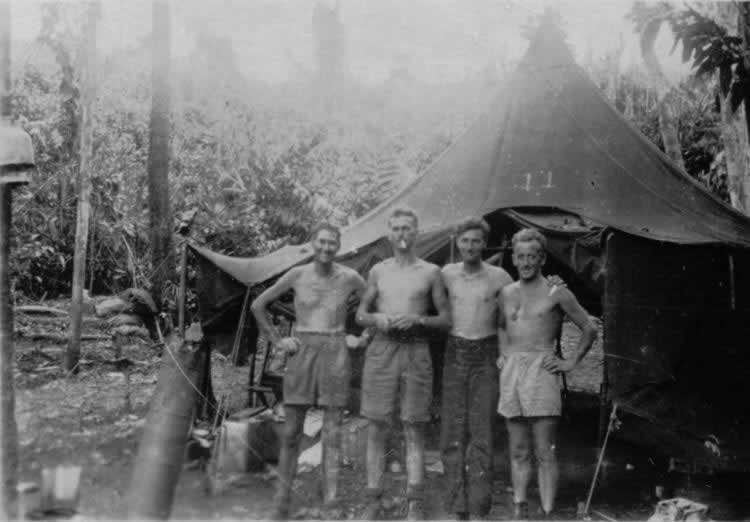 |
|
| Jim's tentmates at Guadalcanal | |
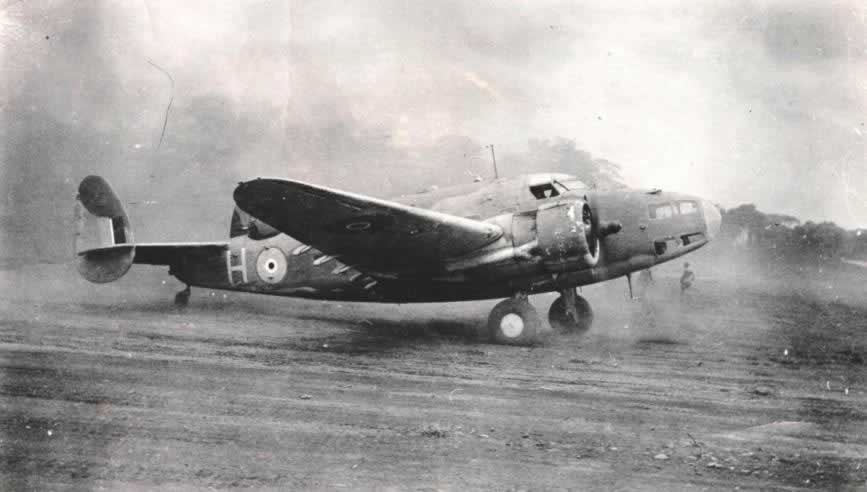 |
|
| A No. 3 (GR) Squadron Hudson operating in the dusty atmosphere of Henderson Field, Guadalcanal | |
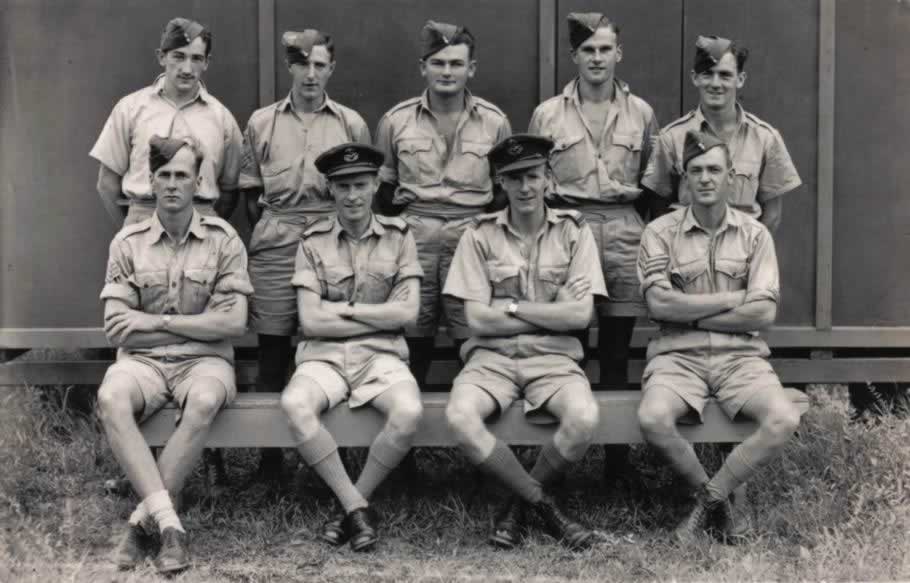 |
|
| I take it by the number of people and mix of ranks this is Jim's Catalina crew. Note Jim is now a Sergeant |
|
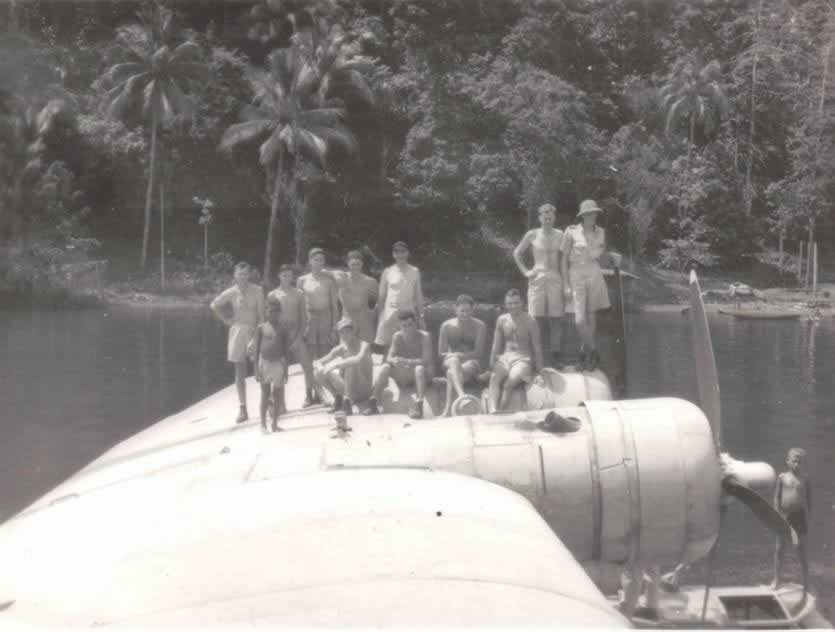 |
|
| The crew and local natives pose atop of a No. 6 Squadron Catalina berthed in a tropical lagoon. Jim is in the topee beside the propeller | |
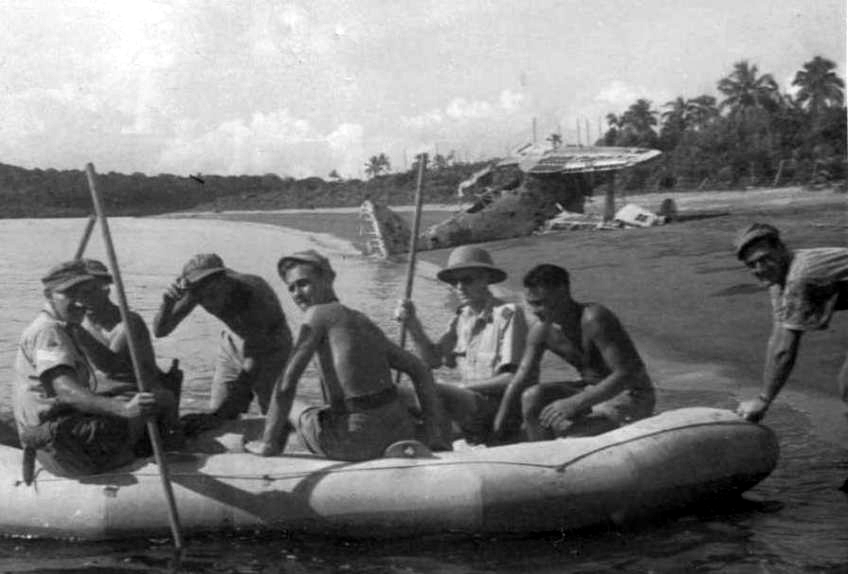 |
|
| Jim and friends on a boating trip to Rekata Bay to visit a derelict Japanese 'Pete' floatplane | |
 |
|
| The 'Pete' floatplane at Rekata Bay again but obviously on a different occasion. Matthew Sullivan of the RNZAF Museum says that RNZAF pilots would use this aircraft as a target to expend their unused ammunition on when returning from missions | |
| Home | Airmen | Roll of Honour |
|---|
